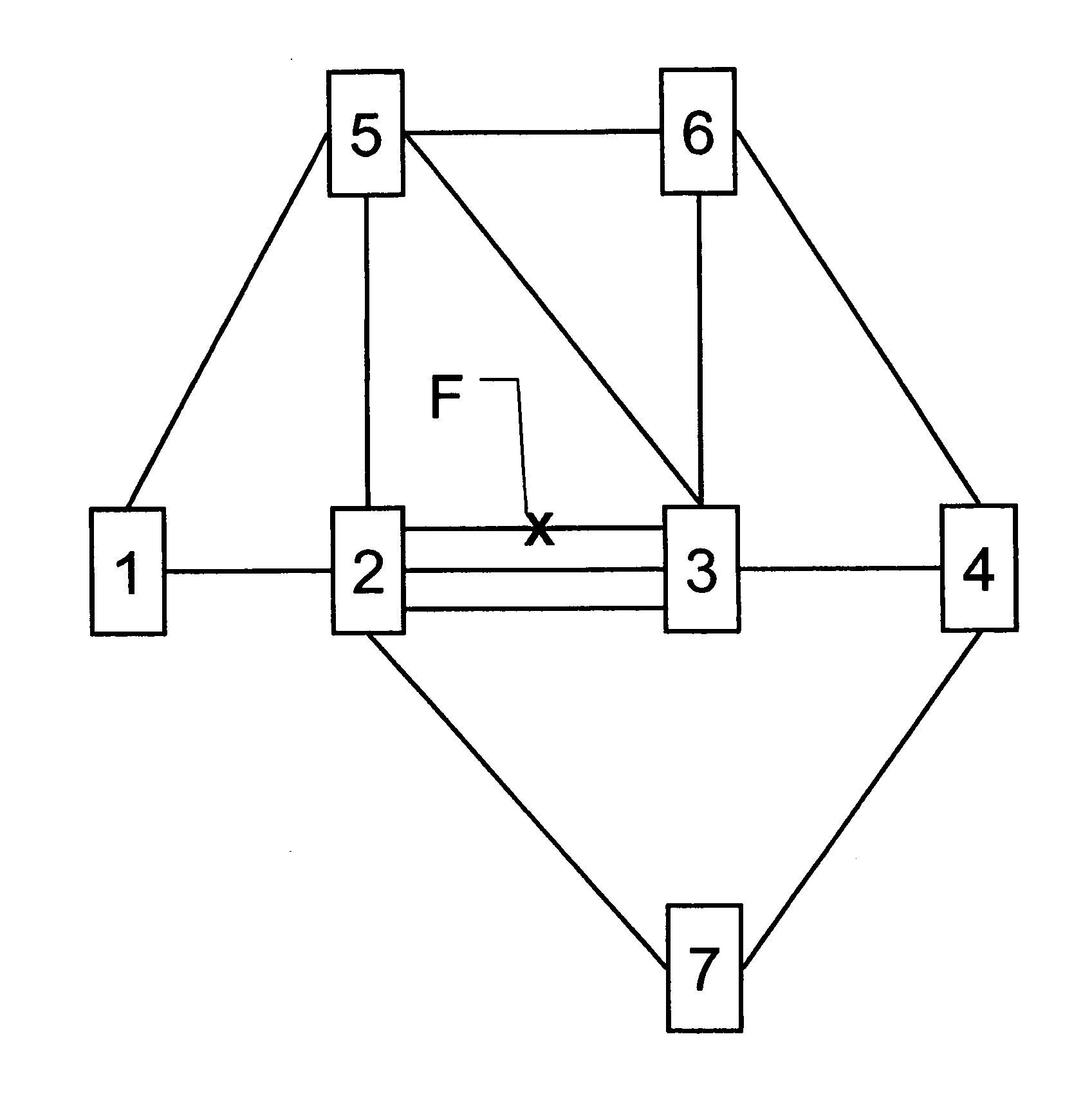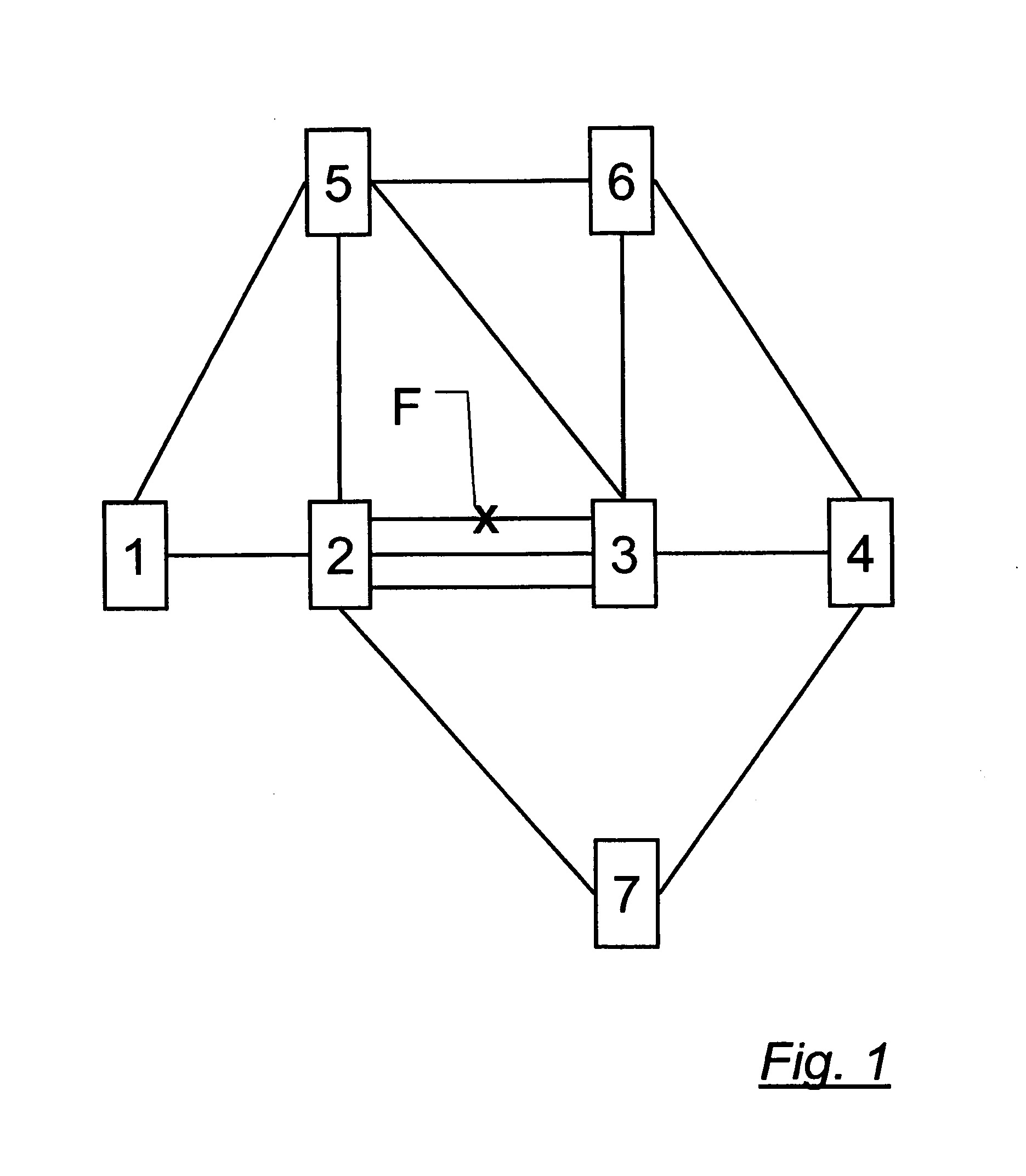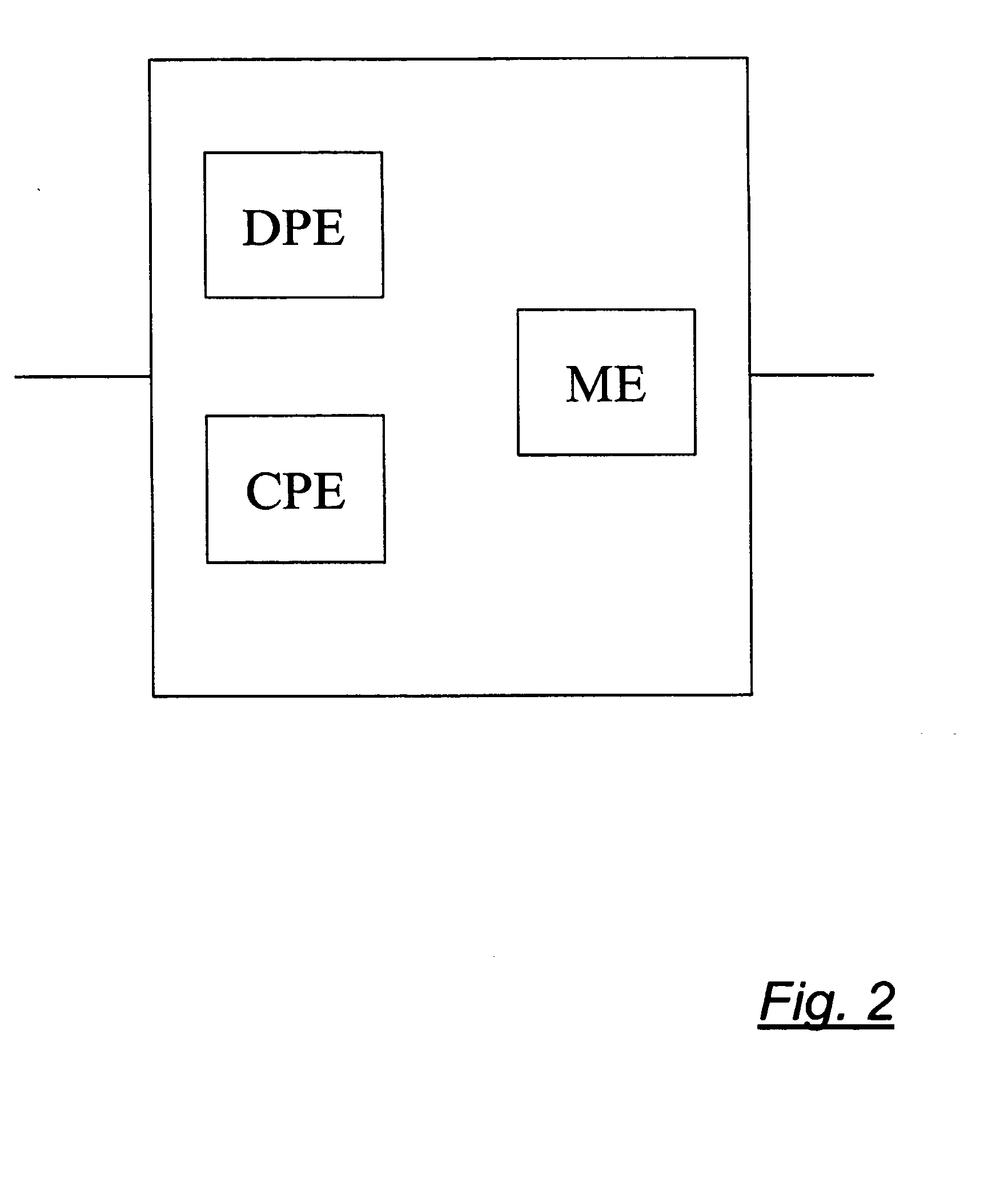Method for restoring connections in a network
a network and connection technology, applied in the field of network connection restoration, can solve the problems of low priority path restoration, fault may affect some active connections, network, etc., and achieve the effect of restoring low priority paths before and after faults
- Summary
- Abstract
- Description
- Claims
- Application Information
AI Technical Summary
Benefits of technology
Problems solved by technology
Method used
Image
Examples
Embodiment Construction
[0030]The telecommunication network of FIG. 1 contains seven nodes, respectively labelled 1, 2, 3, 4, 5, 6, 7, ten single links, i.e. 1-5, 1-2, 2-5, 2-7, 5-3, 5-6, 6-3, 6-4, 3-4 and 7-4 and one bundle 2-3 of three parallel links.
[0031]The network is based on a generalized multiprotocol label switching protocol (GMPLS). The network is hence divided into a data plane and a control plane. In the data plane the transport and the switching of data streams takes place. The control plane takes care of the resource management. GMPLS consists of several protocols, including routing protocols e.g. OSPF-TE (open shortest path first-traffic engineering), link management protocols (LMP), and reservation / label distribution protocols e.g. RSVP-TE (resource reservation protocol-traffic engineering).
[0032]Each node 1 to 7 has an equipment shown in FIG. 2. The equipment comprises a data plane element DPE, a control plane element CPE and a memory element ME, which are interconnected. The data plane el...
PUM
 Login to View More
Login to View More Abstract
Description
Claims
Application Information
 Login to View More
Login to View More - R&D
- Intellectual Property
- Life Sciences
- Materials
- Tech Scout
- Unparalleled Data Quality
- Higher Quality Content
- 60% Fewer Hallucinations
Browse by: Latest US Patents, China's latest patents, Technical Efficacy Thesaurus, Application Domain, Technology Topic, Popular Technical Reports.
© 2025 PatSnap. All rights reserved.Legal|Privacy policy|Modern Slavery Act Transparency Statement|Sitemap|About US| Contact US: help@patsnap.com



